Guoen Hu
Improving the Transferability of Adversarial Examples with New Iteration Framework and Input Dropout
Jun 22, 2021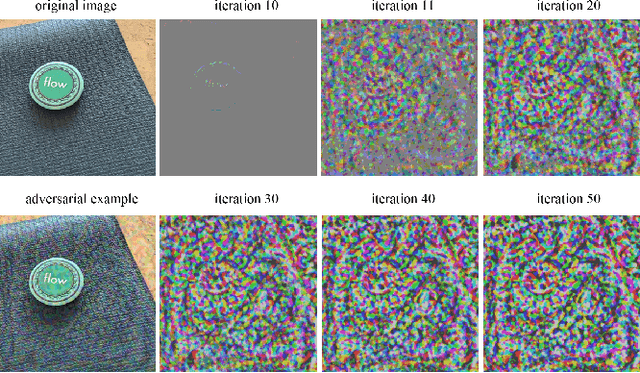

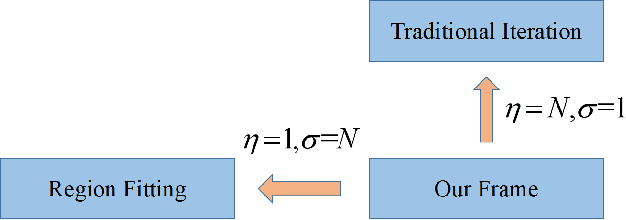

Abstract:Deep neural networks(DNNs) is vulnerable to be attacked by adversarial examples. Black-box attack is the most threatening attack. At present, black-box attack methods mainly adopt gradient-based iterative attack methods, which usually limit the relationship between the iteration step size, the number of iterations, and the maximum perturbation. In this paper, we propose a new gradient iteration framework, which redefines the relationship between the above three. Under this framework, we easily improve the attack success rate of DI-TI-MIM. In addition, we propose a gradient iterative attack method based on input dropout, which can be well combined with our framework. We further propose a multi dropout rate version of this method. Experimental results show that our best method can achieve attack success rate of 96.2\% for defense model on average, which is higher than the state-of-the-art gradient-based attacks.
A visual encoding model based on deep neural networks and transfer learning
Feb 23, 2019



Abstract:Background: Building visual encoding models to accurately predict visual responses is a central challenge for current vision-based brain-machine interface techniques. To achieve high prediction accuracy on neural signals, visual encoding models should include precise visual features and appropriate prediction algorithms. Most existing visual encoding models employ hand-craft visual features (e.g., Gabor wavelets or semantic labels) or data-driven features (e.g., features extracted from deep neural networks (DNN)). They also assume a linear mapping between feature representation to brain activity. However, it remains unknown whether such linear mapping is sufficient for maximizing prediction accuracy. New Method: We construct a new visual encoding framework to predict cortical responses in a benchmark functional magnetic resonance imaging (fMRI) dataset. In this framework, we employ the transfer learning technique to incorporate a pre-trained DNN (i.e., AlexNet) and train a nonlinear mapping from visual features to brain activity. This nonlinear mapping replaces the conventional linear mapping and is supposed to improve prediction accuracy on brain activity. Results: The proposed framework can significantly predict responses of over 20% voxels in early visual areas (i.e., V1-lateral occipital region, LO) and achieve unprecedented prediction accuracy. Comparison with Existing Methods: Comparing to two conventional visual encoding models, we find that the proposed encoding model shows consistent higher prediction accuracy in all early visual areas, especially in relatively anterior visual areas (i.e., V4 and LO). Conclusions: Our work proposes a new framework to utilize pre-trained visual features and train non-linear mappings from visual features to brain activity.
Dissociable neural representations of adversarially perturbed images in deep neural networks and the human brain
Dec 22, 2018
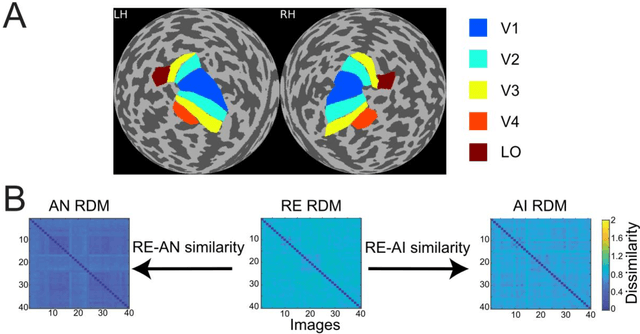
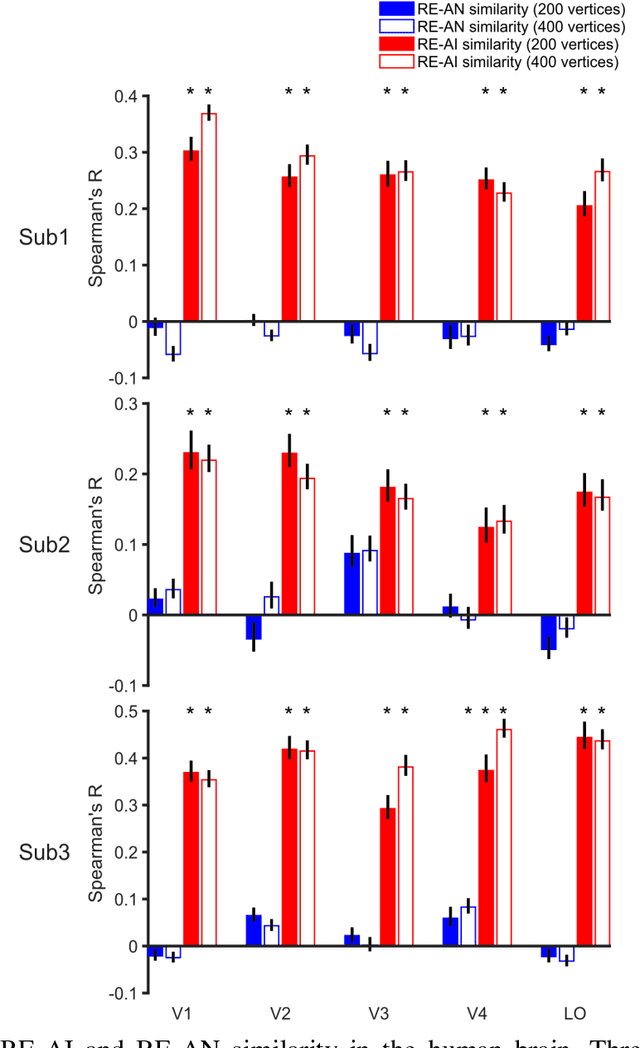
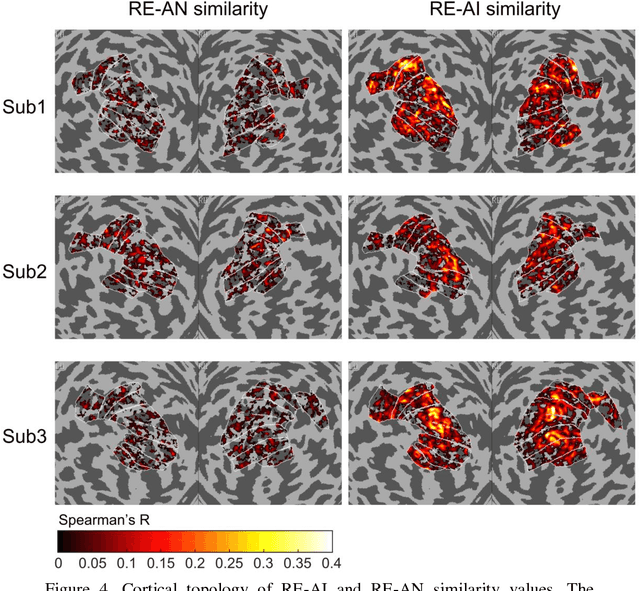
Abstract:Despite the remarkable similarities between deep neural networks (DNN) and the human brain as shown in previous studies, the fact that DNNs still fall behind humans in many visual tasks suggests that considerable differences still exist between the two systems. To probe their dissimilarities, we leverage adversarial noise (AN) and adversarial interference (AI) images that yield distinct recognition performance in a prototypical DNN (AlexNet) and human vision. The evoked activity by regular (RE) and adversarial images in both systems is thoroughly compared. We find that representational similarity between RE and adversarial images in the human brain resembles their perceptual similarity. However, such representation-perception association is disrupted in the DNN. Especially, the representational similarity between RE and AN images idiosyncratically increases from low- to high-level layers. Furthermore, forward encoding modeling reveals that the DNN-brain hierarchical correspondence proposed in previous studies only holds when the two systems process RE and AI images but not AN images. These results might be due to the deterministic modeling approach of current DNNs. Taken together, our results provide a complementary perspective on the comparison between DNNs and the human brain, and highlight the need to characterize their differences to further bridge artificial and human intelligence research.
Image Prediction for Limited-angle Tomography via Deep Learning with Convolutional Neural Network
Jul 29, 2016



Abstract:Limited angle problem is a challenging issue in x-ray computed tomography (CT) field. Iterative reconstruction methods that utilize the additional prior can suppress artifacts and improve image quality, but unfortunately require increased computation time. An interesting way is to restrain the artifacts in the images reconstructed from the practical filtered back projection (FBP) method. Frikel and Quinto have proved that the streak artifacts in FBP results could be characterized. It indicates that the artifacts created by FBP method have specific and similar characteristics in a stationary limited-angle scanning configuration. Based on this understanding, this work aims at developing a method to extract and suppress specific artifacts of FBP reconstructions for limited-angle tomography. A data-driven learning-based method is proposed based on a deep convolutional neural network. An end-to-end mapping between the FBP and artifact-free images is learned and the implicit features involving artifacts will be extracted and suppressed via nonlinear mapping. The qualitative and quantitative evaluations of experimental results indicate that the proposed method show a stable and prospective performance on artifacts reduction and detail recovery for limited angle tomography. The presented strategy provides a simple and efficient approach for improving image quality of the reconstruction results from limited projection data.
 Add to Chrome
Add to Chrome Add to Firefox
Add to Firefox Add to Edge
Add to Edge